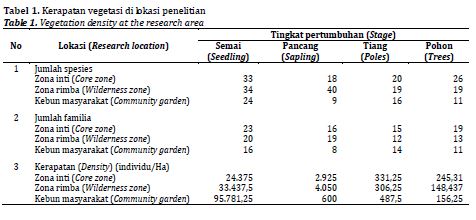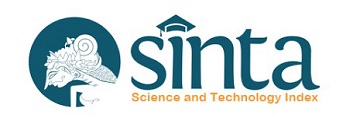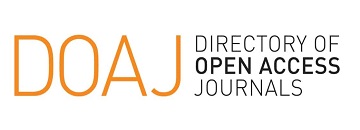Bird responses to habitat change in the karst area of Bantimurung Bulusaraung National Park

Downloads
Downloads
Abrahamczyk, S., M.Kessler, D.D. Putra, M. Waltert, T. Tscharntke. (2008). The value of differently managed cacao plantations for forest bird conservation in Sulawesi, Indonesia. Bird Conservation International, 18, 349–362. BirdLife International. doi:10.1017/S0959270908007570.
Amar, A., F. Amidon, B. Arroyo, J.A. Esselstyn, A.P. Marshall. (2008). Population Trends of the Forest Bird Community on the Pacific Island of Rota, Mariana Islands. The Condor, 110(3), 421-427.
Badan Lingkungan Hidup Daerah Sulawesi Selatan. (2011). Rencana Aksi Pengelolaan Ekosistem Karst Maros Pangkep. Makassar: Badan Lingkungan Hidup Daerah Sulawesi Selatan.
Balai Taman Nasional Bantimurung Bulusaraung. (2008). Rencana Pengelolaan Jangka Panjang Taman Nasional Bantimurung Bulusaraung Periode 2008-2027 Kabupaten Maros dan Pangkep Provinsi Sulawesi Selatan. Maros: Balai Taman Nasional Bantimurung Bulusaraung. 151 h.
Bamotiwa, D., E. Labiro, M. Ihsan. (2014). Asosiasi burung Julang sulawesi (Rhyticeros cassidix) dengan jenis-jenis pohon di kawasan hutan lindung Desa Ensa Kecamatan Mori atas Kab. Morowali Utara. Warta Rimba, 2(2), 67-74.
Burns, K.C. (2009). Dietary diversity in fruit-eating birds: a biogeographic comparison between New Zealand and Canada. New Zealand Journal of Ecology, 33(1), 52-59.
Buzan, E.V., A. Pallavicini. (2014). Biodiversity and conservation of karst ecosystems in the transboundary area. In Buzan dan Pallavicini eds. Biodiversity and Conservation of Karst Ecosystems Part 1, Chapter 1: 11-16. Koper: Padova University Press.
Cavarzere, V. (2013). Does the reproductive season account for more records of birds in a marked seasonal climate landscape in the state of Sao Paulo, Brazil?. Papies Avulsos de Zoologia, 53(18), 253-260.
Cherkaoui I., S. Selmi, J. Boukhriss, R. Hamid, D. Mohammed. (2009). Factors affecting bird richness in a fragmented cork oak forest in Morocco. Acta Oecologia, 35, 197-205.
CITES. (2017). Spesies Data Base: CITES Species List. http://www.speciesplus.net. Diakses tanggal 28 Maret 2017.
Clements, R., P.K.L. Ng, X.X. Lu, S. Ambu, M. Schilthuizen, C.J.A. Bradshaw. (2008). Using biogeographical patterns of endemik land snails to improve conservation planning of limestone karsts. Biological Conservation, 141, 2751–2764.
Clements, R., N.S. Sodhi, M. Schilthuizen, P.K.L. Ng. (2006). Limestone karst of Southeast Asia: imperiled arks of biodiversity. Bioscience, 56(9), 733-742.
Coates, B.J., K. D. Bishop dan D. Gardner. (2000). Panduan Lapangan: Burung-Burung di Kawasan Wallacea: Sulawesi, Maluku dan Nusa Tenggara. Birdlife International-Indonesia Programmed and Dove Publication Pty. Ltd.
Cockle, K.L., K. Martin, M.C. Drever. (2010). Supply of tree-holes limits nest density of cavit-nesting birds in primary and logged subtropical Atlantic forest. Biological Conservation, 143, 2851-2857.
Danielsen, F., C. E. Filardi, K. A. Jonsson, V. Kohaia, N. Krabbe, J. B. Kristensen, R. G. Moyle, P. Pikacha, M. K. Poulsen, M. K. Sorensen, . Tatahu, J. Waihuru, J. Fjelds. (2010). Endemik avifaunal biodiversity and tropical forest loss in Makira, A mountainous Pacific Island. Singapore Journal of Tropical Geography, 31, 100–114. Department of Geography. National University of Singapore and Blackwell Publishing Asia Pty Ltd.
Daru, B.H., K. Yessoufou, C. Nuttman, J. Abalaka. (2015). A preliminary study of bird use of fig Ficus species in Amurum Forest Reserve, Nigeria. Malimbus, 37, 1-15.
Day, M.J. (2010a). Human interaction with Caribbean karst landscapes: past, present and future. Acta Carsologica, 39(1), 137–146.
Day, M.J. (2010b). Challenges to sustainability of the Caribbean karst. Geologia Croatica, 63(2), 149–154. doi:10.4154/gc.2010.12.
Day, M. (2011). Protection of karst landscapes in the developing world: lessons from Central America, the Caribbean, and Southeast Asia. van Beynen, P.E. Introduction. In Karst Management. van Beynen, P.E. ed. New York: Springer Science+Business Media B.V.
Ducatez, S. (2014). Brood parasitism: a good strategy in our changing world? Proceedings of the Royal Society B 281: 20132402. http://dx.doi.org/10.1098/rspb.2013.2404.
Eglington, S.M., S.E. Davis, A.C. Joys, D.E. Chamberlain, D.G. Noble. (2010). The effect of observer experience on English Breeding Bird Survey population trends. Bird Study, 57(2), 129-141. doi: 10.1080/00063650903440648.
Esposito, L.A., T. Bloom, L. Caicedo-Quiroga, A.M. Alicea-Serrano, J.A. Sanchez-Ruiz, L.J. May-Collado, G.J. Binford, I. Agnarsson. (2015). Islands within island: diversification of tailless whip spiders (Amblypygi, Phrynus) in Caribbean caves. Molecular Phylogenetics and Evolution, 93, 107-117.
Fachrul, M.F. (2012). Metode Sampling Bioekologi edisi pertama cetakan ketiga. Jakarta: Bumi Aksara. 198 h.
Fleury, E.S. (2011). Using public policy to affect human behavior on karst landscapes in the United States. In Karst Management. van Beynen, P.E. ed. New York: Springer Science+Business Media B.V.
Gomes, L.G.L., V.Oostra, V. Nijman, A.M. Cleef, M. Kappelle. (2008). Tolerance of frugivorous birds to habitat disturbance in a tropical cloud forest. Biological Conservation, 141: 860-871. Elsevier Ltd. Doi: 10.1016/j.biocon.2006.01.007.
Husein, S., Srijono, H. Dyah. (2008). Morfotektonik pembentukan karst Maros, Sulawesi Selatan. Prosiding Seminar Indonesian Scientific Karst Forum I. 19-20 Agustus 2008. Goenoeng Sewoe Karst Forum. Yogyakarta.
Indriyanto. (2008). Pengantar Budi Daya Hutan. Jakarta: PT. Bumi Aksara. 234 h.
IUCN. (2017). The IUCN Red List of Threatened Species. Version 2017-1. http://www.iucnredlist.org. Diakses tanggal 15 Juni 2017.
Jiguet, F. (2009) Method learning caused a first‐time observer effect in a newly started breeding bird survey. Bird Study, 56(2), 253-258. doi: 10.1080/00063650902791991.
Johnsgard, P. (2009). Birds of the Great Plains: Family Accipitridae (Hawks, Eagles, and Harriers) Revised ed. Lincoln: University of Nebraska.
Kitamura, S., S. Thong-Aree, S. Madsri, P. Poonswad. (2011). Characteristics of Hornbill-dispersed fruits in lowland dipterocarp forest of Southern Thailand. The Raffles Bulletin of Zoology 2011 Suplement, 24, 137-147.
Kmecl, P., J. Figelj, P. Tout. (2014). The birds of dry meadows above the karst edge. In Buzan, E.V. dan Pallavicini, A. eds. Biodiversity and Conservation of Karst Ecosystems Part 1, Chapter 5, 46-63. Koper: Padova University Press.
Kruger, O., M.D. Sorenson, N.B. Davies. (2009). Does coevolution promote species richness in parasitic cuckoos? Proceedings of the Royal Society B 276, 3871-3879.
Maas, B. (2009). Six Years of Habitat Modification in A Tropical Forest Margin of Indonesia Do Not Affect Bird Diversity But Endemik Forest Species. Thesis. Vienna: Faculty of Life Science. University of Vienna.
Martin, T.E., G.A. Blackburn. (2010). Impacts of tropical distrubance upon avifauna on a small island with high endemism: implications for conservation. Conservation Society, 8(2), 127–139.
Martin, T. E., G.A. Blackburn. (2012). Habitat associations of an insular Wallacean avifauna: a multi-scale approach for biodiversity proxies. Ecological Indicators, 23, 491-500.
Menteri Energi dan Sumber Daya Mineral. (2012). Peraturan Menteri Energi dan Sumber Daya mineral Republik Indonesia Nomor 17 Tahun 2012 Tentang Penetapan Bentang Alam Karst. Jakarta: Biro Hukum dan Humas Kementerian Energi dan SUmber Daya Mineral.
Pinho, J. B., M.A. Marini. (2013). Birds’ nesting parameter in four forest types in the Pantanal weland. Brazilian Journal of Biology, 74(4), 890-898.
Presiden Republik Indonesia. (1999). Peraturan Pemerintah Nomor 7 Tahun 1999. Departemen Kehutanan.
Qin, X., R. Zang, F. Xing. (2012). A study on the flora and vegetation of Cat Dua Island, Northeastern Vietnam. Pakistan Journal of Botany, 44(4), 1229-1232.
Rajashekara, S., M.G. Venkatesha. (2013). A method for assessing threats to terestrial bird communities in urban landscapes. In Jayapal, R., Babu, S., Quadros,G., Arun, P.R., Pramod, P., Kumara, H.N., Azeez, P.A. eds. Proceedings of the Second International Conference on Indian Ornithology. 19-23 November 2013. Salim Ali Centre for Ornithology and Natural history, Coimbatore, India.
Santoso, S. (2013). Menguasai SPSS 21 di Era Informasi. Jakarta: PT Elex Media Komputindo.
Schulze, C.H., Riedl, I. (2008). Bird assemblages of forested and human-modified countryside habitats in the Pacific lowlands of southern Costa Rica. Stapfia, 88(80), 395-408.
Shu, X., Z. Lu, G. Yan,, Y. Meng, Z. Li, , F. Zhou. (2013). Survey of the use of birds of various karst wetlands in southwestern Guangxi, southern China. Chinese Birds, 4(4), 291-305. doi: 10.5122/cbirds.2013.0029.
Sodhi, N., D.S. Wilcove, T.M. Lee, C.H. Sekercioglu, R. Subaraj, H. Bernard, D.L. Yong, S.L.H. Lim, D.M. Prawiradilaga, B.W. Brook. (2010). Deforestation and avian extinction on tropical landbrige islands. Conservation Biology, 24(5), 1290-1298.
Struebig, M.J., T. Kingston, A. Zubaid, S.C. Le Comber, A. Mohd-Adnan, A. Turner, J. Kelly, M. Bozek, S.J. Rossitter. (2009). Conservation importance of limestone karst outcrop for paleotropical bats in fragmented landscape. Biological Conservation, 142, 2089-2096. doi:10.1016/j.biocon.2009.04.005.
van Beynen, P.E. (2011). Introduction. In Karst Management. van Beynen, P.E. ed. New York: Springer Science+Business Media B.V.
van Beynen, P.E., K.M. van Beynen. (2011). Human disturbance of karst environments. In Karst Management. van Beynen, P.E. ed. New York: Springer Science+Business Media B.V.
Volpato, G. H., E. V. Lopes, L. B. Mendonça, R. Boçon, M. V. Bisheimer, P. P. Serafini, L. dos Anjos. (2009). The use of the Point Count Method for Bird Survey in the Atlantic Forest. Zoologia (Curitiba, Impresso) 26(1), 74-78. Sociedade Brasileira de Zoologia. Curitiba. Brazil.
Williams, P. (2008). World Heritage Caves and Karst: A Thematic study. IUCN Programme on Protected Area. Gland. Switzerland. 57p.
Yue, Y., K. Wang, B. Zhang, Z. Chen, Q. Jiao, B. Liu, H. Chen. (2010). Exploring the relationship between vegetation spectra and eco-geo-environmental conditions in karst region, Southwest China. Environmental Monitoring and Assessment, 160, 157-168.








